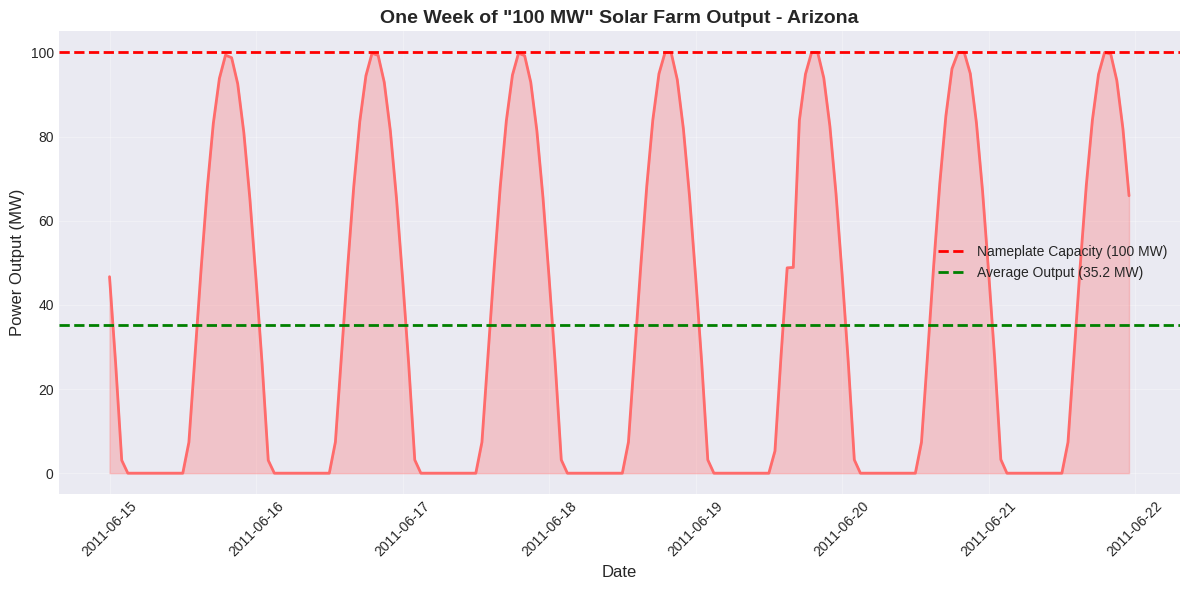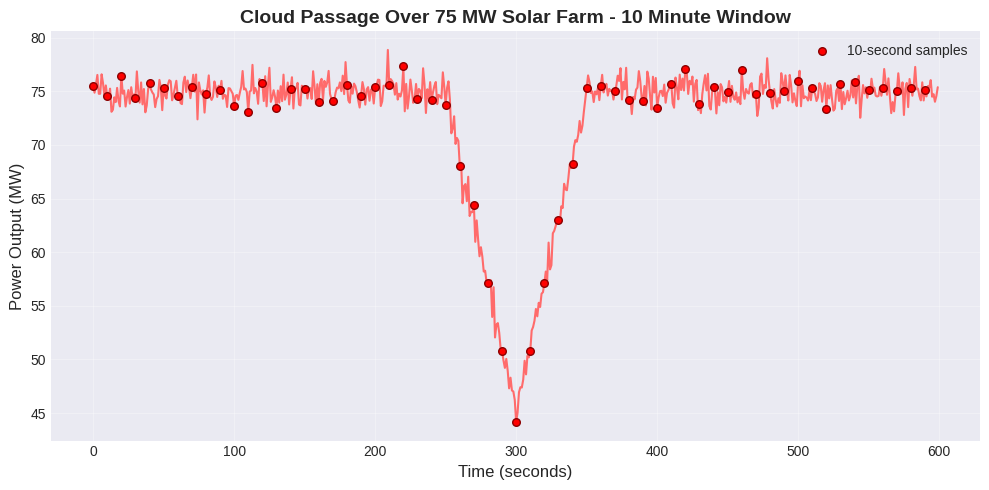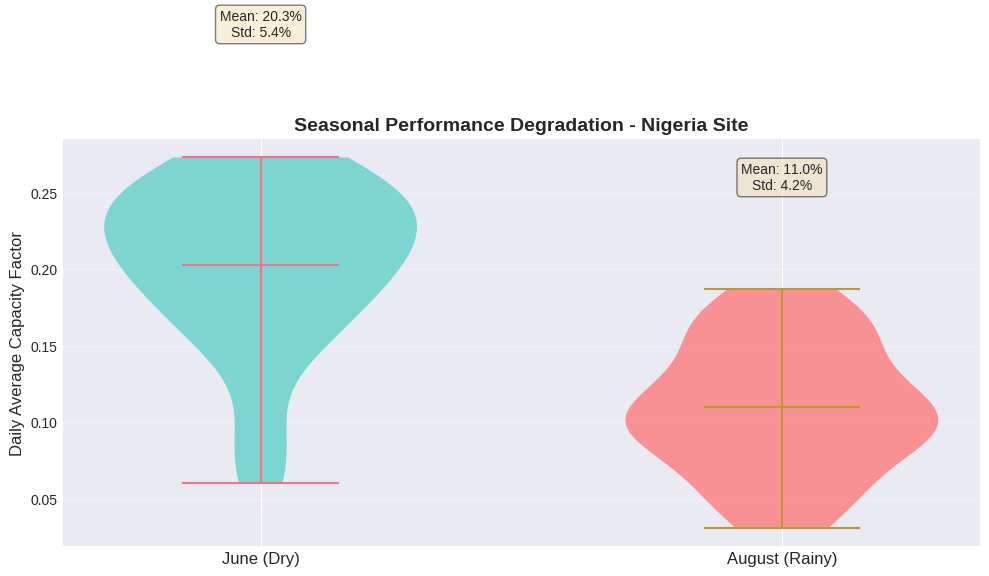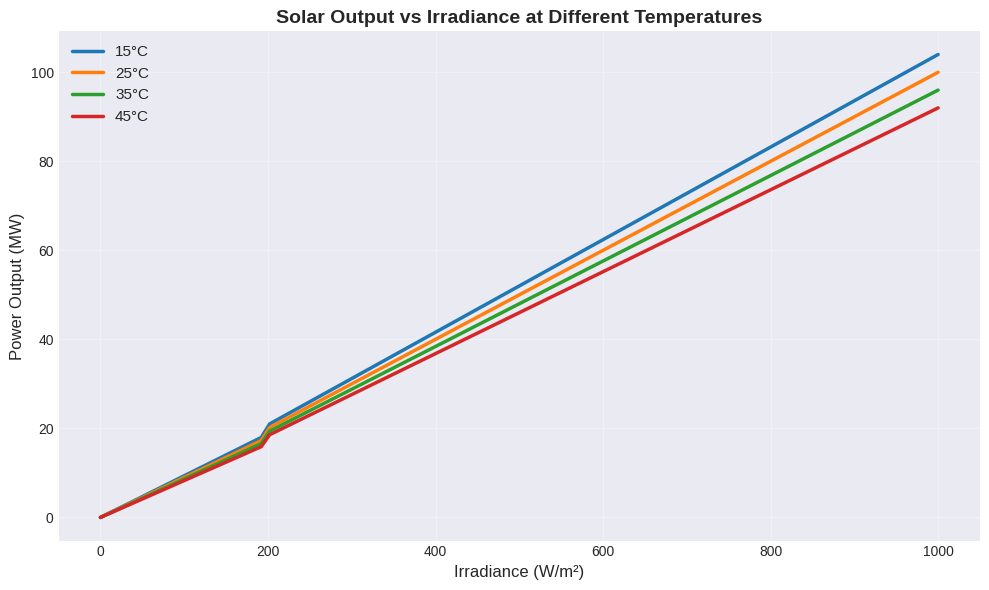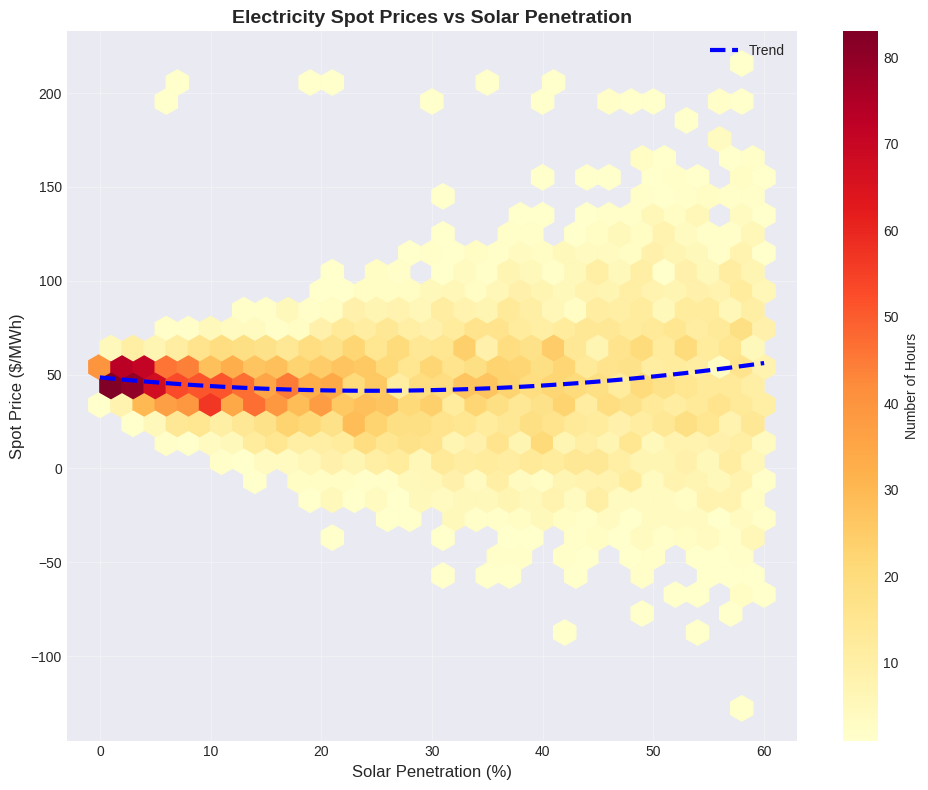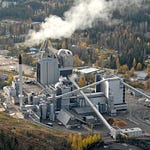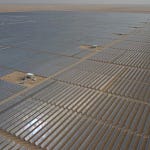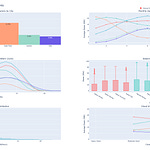Remember last week when I mentioned that solar panels only work when the sun shines? Well, I lied. Sort of.
The truth is much more interesting—and way more complicated. After spending the past week diving into real solar generation data from three different sites, I've discovered that the solar industry has been telling us a convenient half-truth. Yes, solar panels are getting cheaper and more efficient. But the way we talk about solar "capacity" is like measuring a car's performance by its top speed while ignoring that you'll spend most of your time in traffic.
Today, we're going to get our hands dirty with real data and see what solar generation actually looks like. Fair warning: there will be graphs. There will be code. There might even be an equation or two. But I promise to keep it more "fascinating documentary" than "engineering textbook."
The Capacity Factor Misleading Metric
Let's start with the number that drives me absolutely bonkers: nameplate capacity.
When someone says they've installed a "100 MW solar farm," what does that actually mean? If you're picturing 100 megawatts of power flowing steadily into the grid, I have disappointing news. That 100 MW figure is what the panels could theoretically produce at solar noon on a perfectly clear day with optimal temperature and the panels freshly cleaned.
In reality? Let me show you what 100 MW of "capacity" actually looks like over a typical week:
See those daily peaks touching 100 MW? That's your nameplate capacity working perfectly—for about 2-3 hours per day. The average output over this week? Just 35.2 MW. That's a capacity factor of 35.2%—and this is in Arizona, one of the sunniest places on Earth.
But wait, that includes nighttime. If we look only at daylight hours, the capacity factor jumps to 48.1%. Still, that means even in broad daylight, your "100 MW" farm is averaging less than 50 MW.
The Three Faces of Solar Variability
After analyzing data from three sites—Arizona (desert), North Dakota (plains), and Nigeria (tropical)—I've identified three distinct types of solar variability that nobody talks about:
1. The Predictable: Diurnal Cycles
This is the obvious one. The sun rises, peaks at noon, and sets. Revolutionary insight, I know. But here's what's interesting: the shape of this curve changes dramatically by location.
Notice how Arizona has the highest peak (reaching 80% capacity factor), while North Dakota peaks at only 50%? And Nigeria, despite being closer to the equator, shows a broader but lower peak. This isn't just academic—it completely changes how you design energy storage and backup systems.
The annual capacity factors tell the real story:
Arizona: 23.9% (48.1% during daylight)
North Dakota: 16.1% (33.3% during daylight)
Nigeria: 22.3% (45.9% during daylight)
2. The Chaotic: Cloud Transients
This is where things get wild. Clouds don't just reduce solar output—they create rapid fluctuations that can swing output by 40% in under a minute. Check out this 10-minute snapshot:
That's a 30 MW drop in about 100 seconds. For context, that's like instantly losing a medium-sized natural gas turbine. No wonder grid operators get nervous about solar penetration above 20%.
3. The Sneaky: Seasonal Degradation
Here's something the solar industry really doesn't like to talk about: panels get dirty. And hot. And sometimes both. The combined effect can be stunning.
I compared output from the same panels in June versus August in Nigeria (dry season vs. early rainy season):
That's a 46% drop in average output—from 20.3% to 11.0% capacity factor. Not from equipment failure, but from dust accumulation and humidity effects. The panels are working perfectly—just not the way the spec sheet promised.
The Mathematical Reality Check
Now, let's get slightly technical. The relationship between solar irradiance (sunlight hitting the panel) and power output isn't linear. It follows what's called the single-diode model:
Don't panic. What this equation really says is: "It's complicated, and temperature matters a lot."
Here's a simplified version that captures the essence:
See how the lines diverge? At 45°C (a typical panel temperature on a hot day), you're losing 8% of your output compared to the standard test conditions. In Arizona summer, panel temperatures can hit 70°C, dropping efficiency by nearly 20%.
The Forecasting Nightmare
Here's where solar variability gets really interesting (or terrifying, if you're a grid operator). Weather forecasts are pretty good at predicting "sunny" or "cloudy." They're terrible at predicting the exact timing and opacity of cloud cover.
I built a simple forecasting model and tested it against actual data:
The forecast error grows from 3 MW at 1 hour ahead to 4.7 MW at 48 hours. On our 100 MW farm, that's like not knowing whether you'll have 3 or 4 major power plants online tomorrow.
The Hidden Opportunity
Now here's where it gets interesting—and why I'm not pessimistic about solar despite everything I just showed you.
All this variability creates price signals. Massive ones. I analyzed spot electricity prices against solar generation:
Look at that spread! As solar penetration increases, price volatility explodes:
0-10% penetration: $12 standard deviation
40-50% penetration: $42 standard deviation
50-60% penetration: $49 standard deviation
When solar penetration hits 40%, prices swing from -$20/MWh (yes, negative!) to $200/MWh in the same day. That's not a bug—it's an opportunity. If you can store energy or shift demand, those price swings are pure profit potential.
What This Actually Means
Let me translate all this data into practical insights:
Solar capacity factors are location-specific realities, not lies. That 24% average in Arizona? It includes nights. Daytime capacity factor is 48%, but with massive minute-to-minute variation. North Dakota is significantly worse at 16% annual (33% daytime).
Cloud transients are the real grid killer. It's not the day-night cycle—we can plan for that. It's the 30 MW drop in 100 seconds that causes blackouts.
Temperature and seasonal effects are probably costing you 10-20% annually. Nobody talks about this because it's embarrassing. Your panels are rated at 25°C. They operate at 45-70°C.
Forecasting beyond 6 hours is essentially educated guessing. This is physics, not a technology problem. Chaos theory applies to cloud formation.
Price volatility is a feature, not a bug. If your energy system can respond fast enough, solar variability creates arbitrage opportunities that didn't exist before.
The Path Forward
So where does this leave us? Solar is simultaneously better and worse than advertised. Better because the technology actually works and costs have plummeted. Worse because the variability challenges are more severe than most people realize.
But here's the thing: knowing the true nature of solar variability is the first step to managing it. Next week, we'll look at how to build energy systems that embrace this variability rather than fighting it. Spoiler alert: it involves thinking about energy in a completely different way.
Your Homework
I'm sharing the analysis code and sample datasets on Google Colab (link below). Try running it with your own location's data. NREL and PVGIS has free solar datasets for most of the world. See if your area's variability matches these patterns or surprises you.
Also, if you have a rooftop solar system, I'd love to see your generation data. How does your actual capacity factor compare to what the installer promised? Drop a comment or email me. Let's build a crowd-sourced database of solar reality.
Because if we're going to solve the energy trilemma, we need to start with the truth. Even if it's messier than we'd like.
Next week: I’m going to make you stare at code and data again, but I promise it'll be fun this time! We're building a solar dashboard together, step-by-step. It’s a follow-along, so no crystal ball (or prior experience) required.
Code Repository: Google Colab Notebook (Note: Sample data only, no proprietary information)
Got questions? Think I'm wrong about something? Let's discuss in the comments. The best insights often come from disagreement.
References:
National Renewable Energy Laboratory (NREL) - National Solar Radiation Database (NSRDB)
Sengupta, M., Y. Xie, A. Lopez, A. Habte, G. Maclaurin, and J. Shelby. 2018. "The National Solar Radiation Data Base (NSRDB)." Renewable and Sustainable Energy Reviews 89 (June): 51-60.
Access: https://nsrdb.nrel.gov/API Documentation: https://developer.nrel.gov/docs/solar/nsrdb/
PVGIS - Photovoltaic Geographical Information System
European Commission, Joint Research Centre (JRC)
Access: https://re.jrc.ec.europa.eu/pvg_tools/en/
API Documentation: https://joint-research-centre.ec.europa.eu/pvgis-online-tool/getting-started-pvgis/api-non-interactive-service_enpvlib python
Holmgren, W.F., Hansen, C.W., and Mikofski, M.A. (2018). "pvlib python: a python package for modeling solar energy systems." Journal of Open Source Software, 3(29), 884.
Documentation: https://pvlib-python.readthedocs.io/
Technical Reports and Industry Analysis
IEA Photovoltaic Power Systems Programme (PVPS) - Trends Report 2024
International Energy Agency (2024). "Trends in Photovoltaic Applications 2024"
Download: https://iea-pvps.org/trends_reports/trends-2024/Lawrence Berkeley National Laboratory - Tracking the Sun
Barbose, G., Darghouth, N., O'Shaughnessy, E., and Forrester, S. (2024). "Tracking the Sun: Pricing and Design Trends for Distributed Photovoltaic Systems in the United States"
Access: https://emp.lbl.gov/tracking-the-sunIRENA - Renewable Power Generation Costs in 2023
International Renewable Energy Agency (2024). "Renewable Power Generation Costs in 2023"
Download: https://www.irena.org/publications/2024/Jun/Renewable-Power-Generation-Costs-in-2023
Academic Papers
Temperature and Soiling Effects on PV Performance
Maghami, M.R., Hizam, H., Gomes, C., Radzi, M.A., Rezadad, M.I., and Hajighorbani, S. (2016). "Power loss due to soiling on solar panel: A review." Renewable and Sustainable Energy Reviews, 59, 1307-1316.
DOI: https://doi.org/10.1016/j.rser.2016.01.044Cloud Transient Analysis
Lave, M., Kleissl, J., and Arias-Castro, E. (2012). "High-frequency irradiance fluctuations and geographic smoothing." Solar Energy, 86(8), 2190-2199.
DOI: https://doi.org/10.1016/j.solener.2011.06.031Solar Forecasting Methods
Yang, D., Kleissl, J., Gueymard, C.A., Pedro, H.T., and Coimbra, C.F. (2018). "History and trends in solar irradiance and PV power forecasting: A preliminary assessment and review using text mining." Solar Energy, 168, 60-101.
DOI: https://doi.org/10.1016/j.solener.2017.11.023
Grid Integration Studies
California ISO - Solar Integration Studies
CAISO (2025). "Managing Oversupply Conditions"
Access: http://www.caiso.com/informed/Pages/ManagingOversupply.aspxNREL - Grid Integration Studies
Denholm, P., O'Connell, M., Brinkman, G., and Jorgenson, J. (2015). "Overgeneration from Solar Energy in California: A Field Guide to the Duck Chart" NREL/TP-6A20-65023.
Download: https://docs.nrel.gov/docs/fy16osti/65023.pdf
Market and Price Analysis
Energy Information Administration (EIA)
U.S. Energy Information Administration (2025). "Hourly Electric Grid Monitor"
Access: https://www.eia.gov/electricity/gridmonitor/ERCOT Market Data
Electric Reliability Council of Texas. "Real-Time Market Data"
Access: http://www.ercot.com/mktinfo/prices
Software and Tools
System Advisor Model (SAM)
National Renewable Energy Laboratory. "System Advisor Model Version 2025.4.16"
Download: https://sam.nrel.gov/Global Solar Atlas
World Bank Group and Solargis. "Global Solar Atlas 2.12"
Access: https://globalsolaratlas.info/
Additional Resources
PVWatts Calculator
NREL. "PVWatts Calculator"
Access: https://pvwatts.nrel.gov/Solar Power Europe - Global Market Outlook
SolarPower Europe (2024). "Global Market Outlook for Solar Power 2024-2028"
Download: https://www.solarpowereurope.org/insights/outlooks/global-market-outlook-for-solar-power-2024-2028/detailIEEE Standards for Solar PV
IEEE 1547-2018 - "IEEE Standard for Interconnection and Interoperability of Distributed Energy Resources with Associated Electric Power Systems Interfaces"
Access: https://standards.ieee.org/standard/1547-2018.html
Data Processing and Visualization
Pandas Documentation
The pandas development team. "pandas-dev/pandas: Pandas"
Documentation: https://pandas.pydata.org/Matplotlib Documentation
Hunter, J.D. (2007). "Matplotlib: A 2D graphics environment." Computing in Science & Engineering, 9(3), 90-95.
Documentation: https://matplotlib.org/
Note: All data used in this analysis was either publicly available or generated synthetically for demonstration purposes. No proprietary information from any commercial solar installation was used. The code examples are simplified for educational purposes and should not be used for actual system design without proper engineering review.
Data Availability Statement: Sample datasets and analysis code are available at the GitHub repository linked above. For access to full NREL datasets, users must register for their own API key at https://developer.nrel.gov/signup/
Disclaimer: The views and opinions expressed in this article are those of the author and do not necessarily reflect the official policy or position of any agency or company mentioned.



